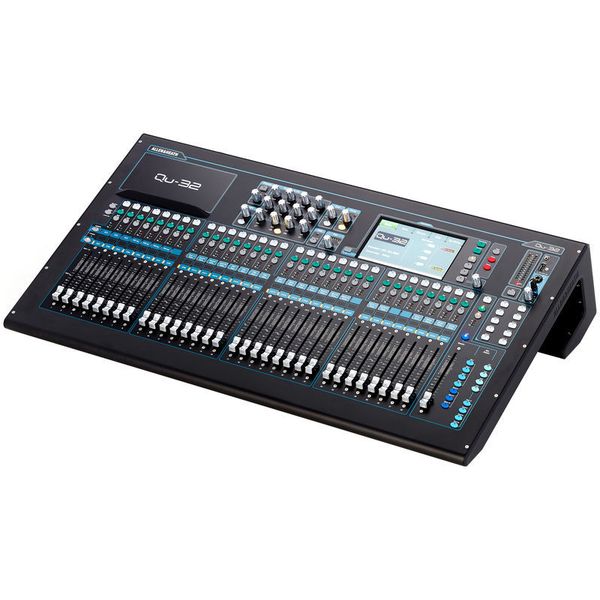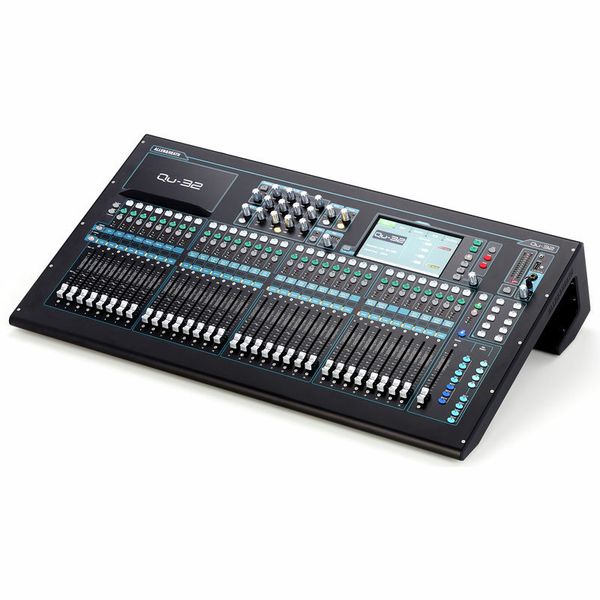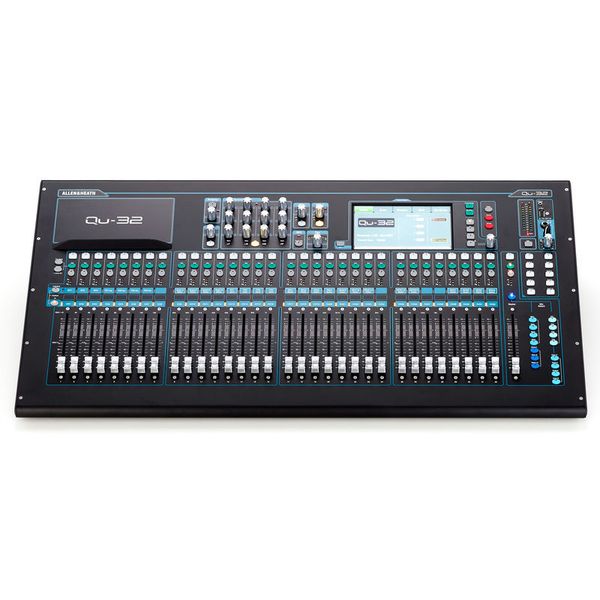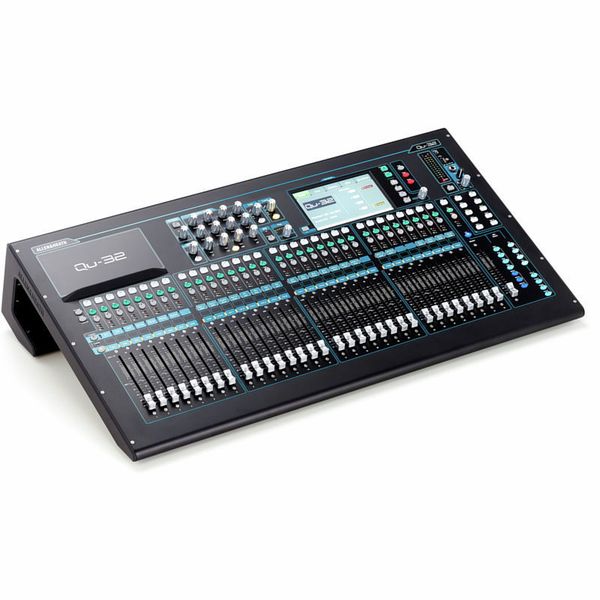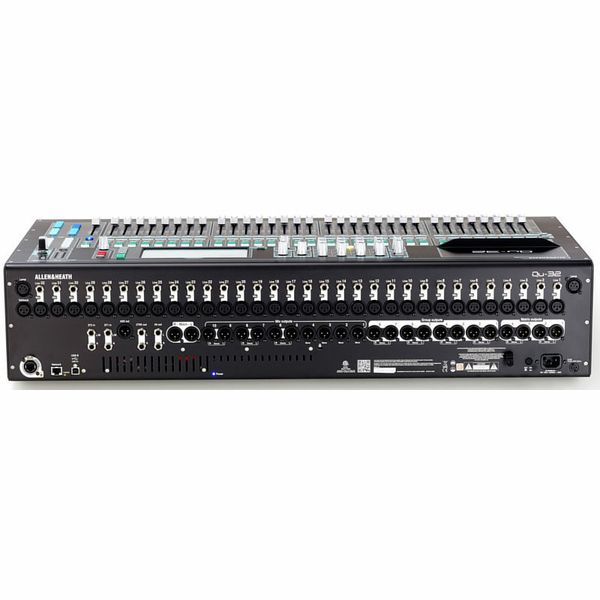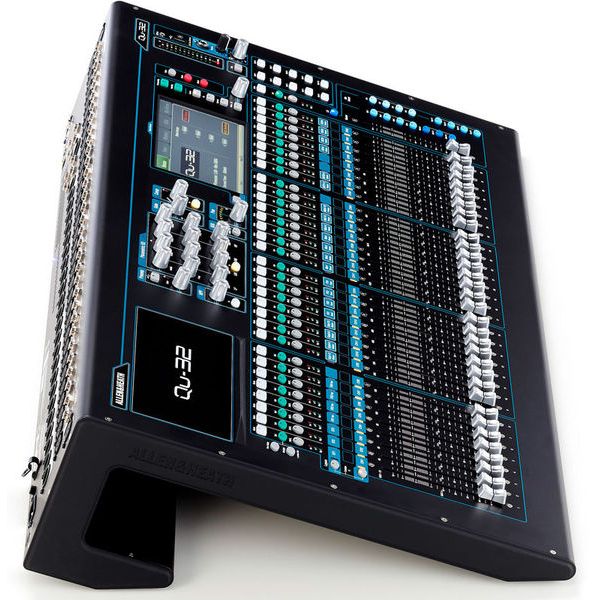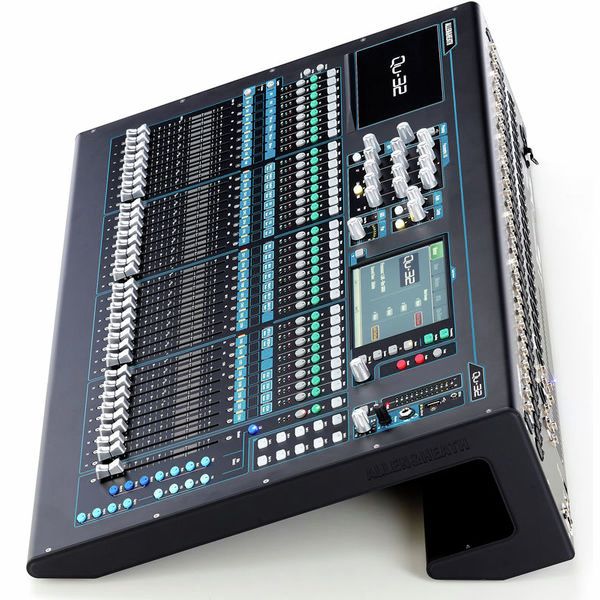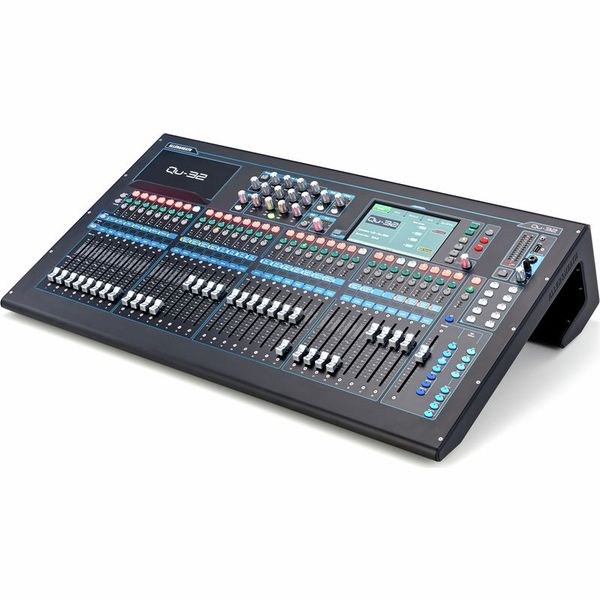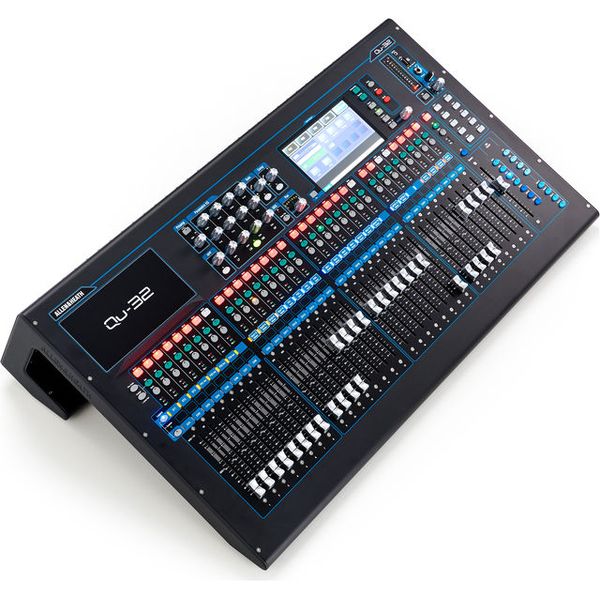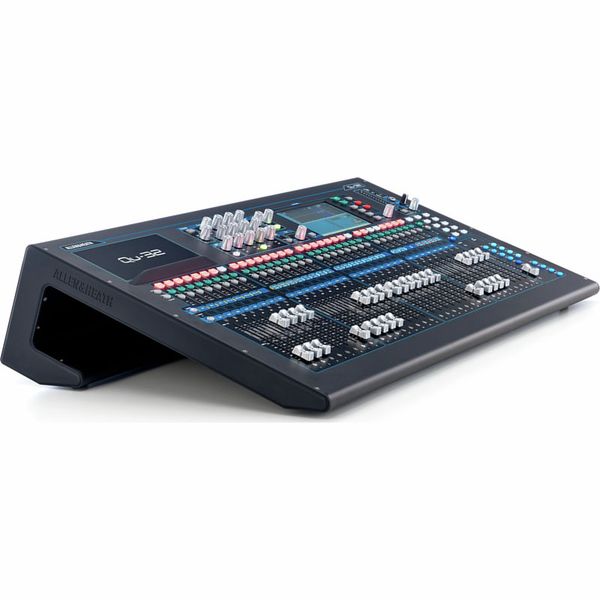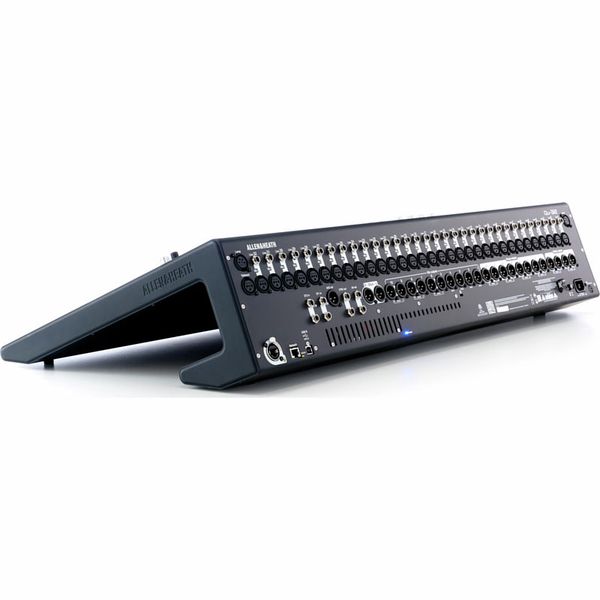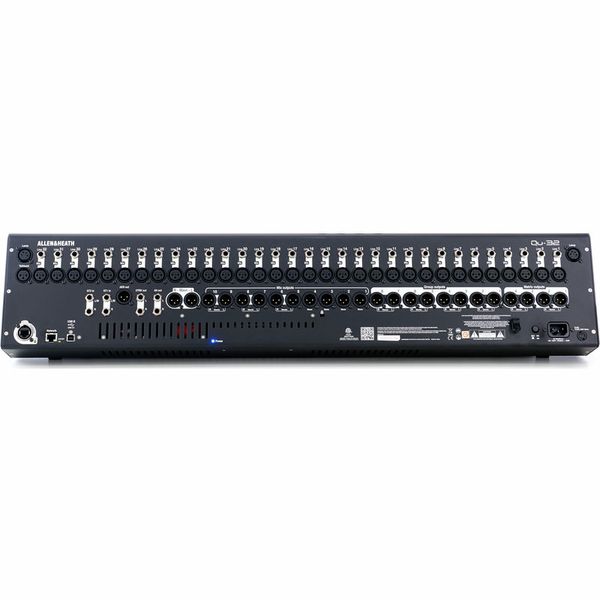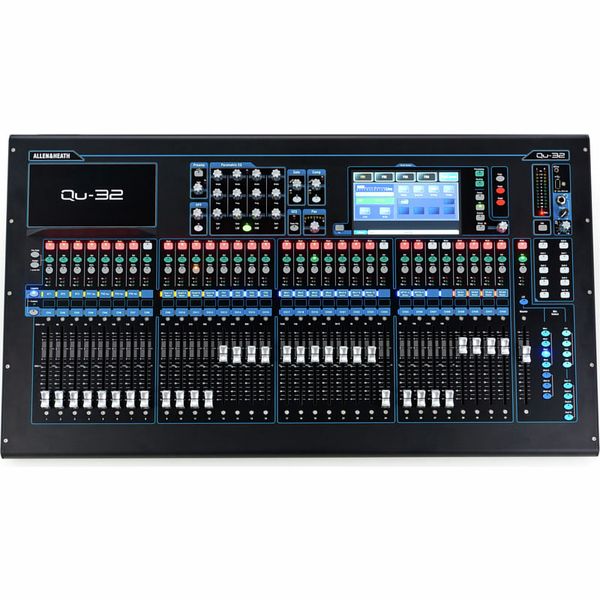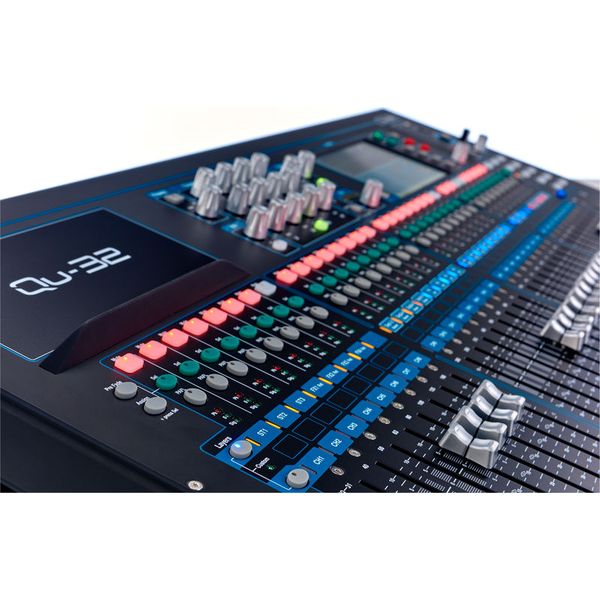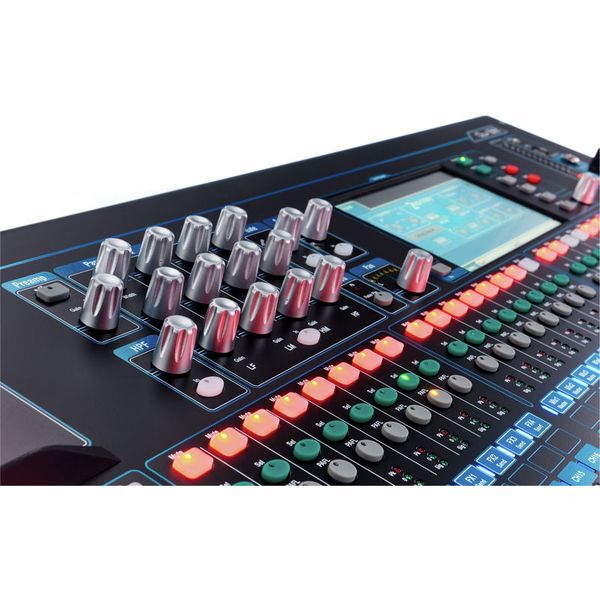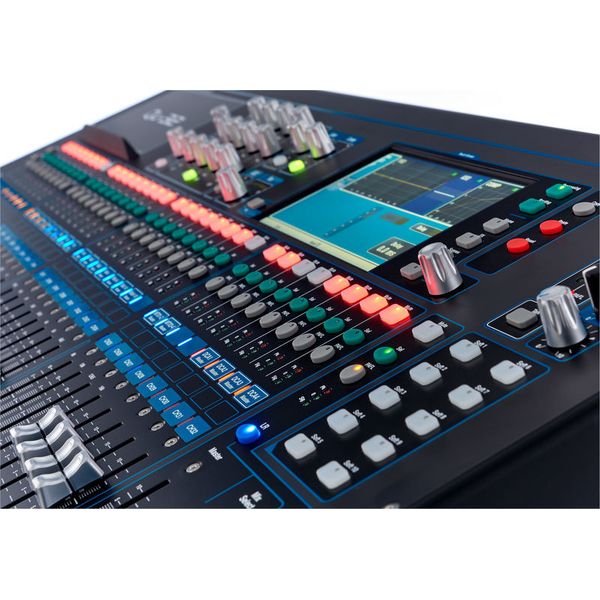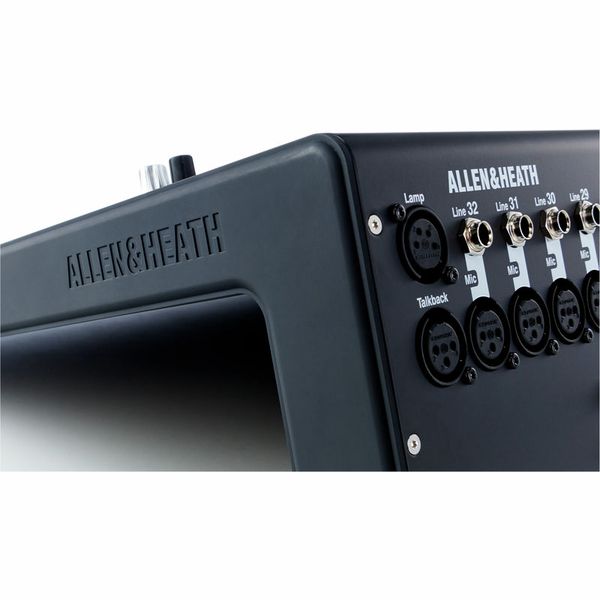I've been using the QU-32 as my audio interface for about a month and a half now after my previous mixer interface died after over a decade of service. I've got a lot of instruments, and don't want to constantly be plugging and unplugging gear just to be able to record a part, so having a large number of inputs was a must.
The fact that all 32 main inputs are available as both XLR and 6.3 mm jacks is another big bonus in my eyes, making it easy to connect any type of equipment without worrying about cable types and needing a bunch of extra gear just to connect everything. The 32 in the name is a bit of a misnomer, you actually get more than that given that there are 3 additional stereo ins - although one is a stereo mini jack, so obviously geared more towards live use and connecting an MP3 player/laptop or similar.
Getting acquainted with the interface was relatively quick - if you've used a digital mixer before, you shouldn't have much difficulty. I do still find myself forgetting which of the buttons provides access to some of the lesser used features, something I'm sure I'll get better at over the years. The lack of descriptive channel naming on the mixer itself might be a downside for some of you, although I don't mind. You can name each channel individually and the name will show up on the touch screen, but it's not the same as having a meaningful label right where the faders are. IMO, that's more likely to be an issue for live use or in studios where the inputs change from session to session. Given that I'm not planning on massively changing my setup any time soon, I know which channel is which anyway. YMMV, and probably something to bear in mind.
You get a generous amount of outputs too - more than I personally need - but too many is always better than not enough. Routing is pretty straightforward with dedicated buttons for recalling the fader settings for each of the mix outs, FX sends etc.
Each channel has pretty much what you'd expect from a channel strip: gain, a gate, EQ and compression. There's also an HPF that you can engage on each channel. You can choose the point in the signal chain you want to capture audio (post pre-amp, post EQ etc.).
The pre-amps are a massive step up from my previous mixer (which also cost a lot less to be fair), with a crystal clear signal path. I can't compare them to other gear in a similar price range, but suffice to say that I am more than pleased with the improvement they have made to my recordings.
The ASIO drivers seem to be well written, and recording with low buffer sizes (64, 128) has not been an issue at all. That's great if you are using virtual amps ITB like I am for guitar recordings! Obviously once projects start getting CPU heavy you need to increase the buffer size, so there are limits to how hard you can push things.
Another nice feature of the mixer for studio use is that you can route audio from your DAW to any of the 32 mixer channels, allowing you to mix using the faders and the onboard channel strip/FX if you want to get hands on. It's also a great way to save CPU and keep latency low.
There are a range of on-board FX that are all very usable including the obvious delays and reverbs, as well as phasers, flangers, ADT and more. These won't fully replace all your plugins of course, especially if you want more esoteric effects. But the bread and butter stuff is all there if you need it. Or you can just use them for tracking vox etc. while recording the dry signal, and then do the final mix ITB.
Other nice features for studio work are the "soft" buttons, that I've partially mapped to transport controls in my DAW. The mixer also sends MIDI messages over the USB connection, so you can control your DAW's mixer from the QU (and vice versa).
Finally having a mixer cum audio interface has the advantage that you aren't restricted to having the PC on if you just want to jam; everything is plugged in and ready to go whenever you are. That immediacy is important to me!
What about downsides? The most obvious one is the misguided placement of the power switch, which really is in the wrong place at the back, hidden beneath all your audio cables. I'm not sure who thought that was a good idea... And sleeping Windows (7) seems to lock the ASIO drivers and sometimes requires unplugging the USB cable and re-connecting it. Finally, as previously mentioned, there's no LCD display per channel telling you what is on that channel which may put some of you off. But these are hardly deal breakers in my book.
I can't comment on the longevity of the components after a few months, but the build quality is solid and the knobs are all robust with no awkward jumps or jitter. It definitely feels like it's built to last!
All in all, the QU-32 has proven a wonderful addition to my studio: rock solid low latency ASIO drivers, clean pre-amps, dual inputs (XLR/jack) per channel and a boot time of about 2 seconds. I'd recommend it without hesitation if you are looking for an audio interface with a significant number of inputs. It also looks great as far as I am concerned - and everyone who has seen it has immediately been impressed by its looks. While that shouldn't really be a factor, having gear that inspires you and makes you want to use it is such a crucial part of being productive that I think it's worth mentioning!
In short, this is a fantastic piece of versatile gear that lets you work the way you want to in the studio.



